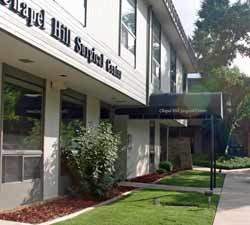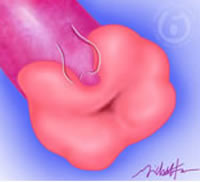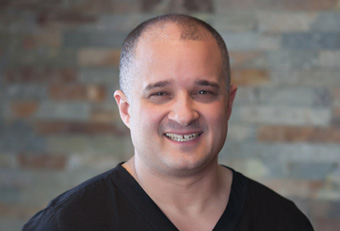 Esmeldy and Rosendo came from the Dominican Republic for tubal reversal at A Personal Choice because we specialize in tubal ligation reversal surgery.
Esmeldy and Rosendo came from the Dominican Republic for tubal reversal at A Personal Choice because we specialize in tubal ligation reversal surgery.
They are both from the Dominican Republic, but currently live and work in Pennsylvania.
Esmeldy agreed to share her story of tubal ligation, meeting the love of her life, and her decision to have a tubal reversal in Chapel Hill, North Carolina.
Below is her story about her decision to have tubal reversal…
Tubal Ligation In Dominican Republic
Esmeldy is 33 years-old and is a working mother of two daughters. Esmeldy says she has ‘one hundred jobs’ but her first job is a mortgage loan officer.
After the birth of her second daughter Esmeldy she had a tubal ligation in the Dominican Republic. She had a post-partum ligation and resection type of tubal ligation.
After her tubal ligation she met and married Rosendo. Rosendo does not have any children and works as a Wal-Mart sales associate. Together they discussed having children of their own and they went to Esmeldy’s doctor in the Dominican Republic to discuss the possibility of tubal reversal surgery.
Tubal Reversal In Dominican Republic?
Esmeldy’s doctor was not in favor of a tubal reversal surgery. He believed it did not work.
He did encourage them to consider in-vitro fertilization (IVF). He told them IVF would give them quicker and better results. Esmeldy and Rosendo did not want to pursue their doctor’s recommendations. They wanted a more natural way to become pregnant and they began to research tubal reversal surgery without the help of their doctor.
Tubal Reversal Centers
 Esmeldy found A Personal Choice while searching the internet for tubal reversal centers.
Esmeldy found A Personal Choice while searching the internet for tubal reversal centers.
She studied the website for one year before deciding to have her tubes untied at our reversal center. When she made her decision to have her tubes untied she requested her records from her doctor in her home country.
Her tubal ligation operative report was not available. Her doctor did write on office stationary in Spanish that she had her tubes ‘tied and cut’ after having a baby. This was all that was available for her records of a tubal ligation.
Reversal Of Tied And Cut Tubes
When Esmeldy and Rosendo came for their evaluation we reviewed her unofficial ‘operative note’ about having her tubes cut and tied. Since we did not have an official operative note, we discussed the option of a screening laparoscopy to evaluate her tubes before a abdominal incision was made. I did advise them a screening laparoscopy is optional and worth considering.
I also advised them we are able to repair both tubes in over 90% of our patients. Together they decided to not have a screening laparoscopy and to proceed directly with a reversal surgery.
Esmeldy’s Tubal Surgery
Esmeldy’s tubal surgery went very well. We did discover an unexpected finding. When her tubes were tied the left tube was cut and tied very close to the end of the tube. This left tube could not be repaired in the standard fashion. Since most of the end of the tube had been removed, we had to open the end of her tube with an ampullary salpingostomy procedure. The right tube was repaired in the more typical fashion using a tubotubal anastomosis procedure.
The tubal surgery lasted 66 minutes. The left tube was 4.0cm and the right tube was 5.5 cm. The estimated blood loss was 25 milliliters (1.5 tablespoons). Both tubes were open after the repair.
Esmeldy was able to recovery in our post operative recovery area and she was discharged to the local hotel. We evaluated her the day after her reversal surgery and she was doing well. She then returned to Pennsylvania and we hope to see a Pregnancy Report from her soon.
Salpingostomy Reversal Procedure And Fimbriectomy
Fimbriectomy is a type of tubal ligation when the end of the fallopian tube is removed. This is an uncommon form of tubal ligation. The only way to determine if a fimbriectomy has been done is either by a verbal report from the doctor or an operative or pathology report which confirms this is the way the tubes were tied and cut.
 Often the tubes were tied or cut near the end but the fimbria have not been removed. Technically this is not a fimbriectomy; however, when the tube is tied very near the fimbrial tissue this can adversely affect the blood supply and cause any residual tube to die and be absorbed after the tubal ligation. This can be reversed by opening the end of the remaining tube. This is a salpingostomy procedure.
Often the tubes were tied or cut near the end but the fimbria have not been removed. Technically this is not a fimbriectomy; however, when the tube is tied very near the fimbrial tissue this can adversely affect the blood supply and cause any residual tube to die and be absorbed after the tubal ligation. This can be reversed by opening the end of the remaining tube. This is a salpingostomy procedure.
Salpingostomy procedures can help patients become pregnant; however, the pregnancy rate is lower than with a standard tubal repair. On average, approximately 70% of patients become pregnant after a standard tube repair; however, with salpingostomy the chance of pregnancy ranges from 15-40% and depends on the health and length of the remaining fallopian tubes.
Submitted by Dr. Charles Monteith









